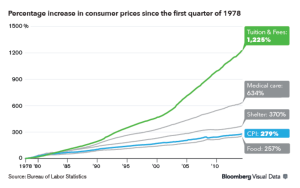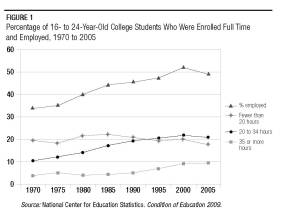It’s no secret to anyone remotely part of higher education that online courses in all of their formations (hybrid or blended, MOOCs, fully online, asynchronous, in-real-time, etc.) have been promoted as the education of the future. The sense of skepticism about these technological advancements is increasing, as demonstrated in the new Gallup study “The 2014 Inside Higher Ed Survey of Faculty Attitudes on Technology” (sponsored by Inside Higher Ed, Pearson, and Blackboard). Here’s the brief rundown:
- Approximately 91% of faculty members don’t believe that online courses can achieve equivalent learning outcomes to face-to-face courses
- 83% of faculty members believe the quality of student interaction in online courses is lower than face-to-face courses
- Faculty feel that they have been left out of university decisions/discussions about the move to online courses
I’ll be responding to the full Gallup report in a later post because I’m especially interested in what we can do about these perceptions and what this means for pedagogical training or implementation. But for now, I’m trouble because once again I find a significant voice remains unheard in this conversation. Where are the students? What do they have to say about their higher education experiences?
To be honest, it’s a terrible time to be a student. Once again, none of this is new to anyone who works with students, but it needs to be repeated:
- The cost of a college education is rising, and students are increasingly shouldering more of the burden as state and federal governments have removed funding from public institutions. From 2001 to 2011, tuition/room and board at public universities rose 40 percent, and the cost of a private institution rose by 28% (according to National Center for Education Statistics)
- Subsequently, students have an increase in extracurricular responsibilities, namely work. An AAUP survey found that 45% of traditional, full-time undergraduates worked while enrolled and 80% of part-time students worked.
- Not only has the number of students who work increased, but the amount of time students spend working has also increased. 21% of students work 20-34 hours per week (this represents an increase), and 8% work at least 35 hours (this is a slight decrease from the initial 2008 recession but is still up from prior survey years).
Students are facing very real, very difficult material circumstances. And yet, very little of higher education has changed up until this point to accommodate the changing circumstances of these students. Universities still function on temporally-bounded semesters or quarters, the general education curriculum still requires 30-60 credit hours, courses generally require the same amount of face-time as the number of credit hours, and courses for the most part require the same amount of work if not more as universities become increasingly concerned about maintaining rankings and the possibility of government-sponsored ratings. Meanwhile, professors lament the demise of their students’ curiosity, popular books argue that students aren’t actually learning anything in college, and students (and politicians) are failing to see the value in a college education.
And at this point, who can blame them? College isn’t working for the students anymore because it’s not responding to the students who are currently here. We’re still teaching in a state of nostalgia for a student who probably never really existed but that we reminisce about fondly. The student who showed up for class prepared by reading all of the required and supplemental material, the student who was driven by intellectual curiosity and not the looming specter of a terrible job market, the student whose primary responsibility was to be a student.
I’m not suggesting that maintaining standards is a bad thing, or that we need to move to a 60 credit hour degree program that guts the general education curriculum. I’m not even arguing that online education is the way to fix these problems. What I’m suggesting is that we (faculty, administrators, university staff members, students, community partners, etc.) need to seriously reflect on what we are currently doing, why we are doing it (“Because we’ve always done so” is not a convincing reason), what are the current needs for the various stakeholders, and how can we meet those needs.
I do believe that online education is one way that we can meet some of the current needs of students. In my own hybrid classroom, students consistently mentioned they liked the flexible class format because it allowed them to work on their own time, and it alleviated one of their major concerns about how to juggle school work with pay-the-bills work. I won’t claim that this approach worked for everyone, but we should make the option available to students to take these courses. But we also need to make sure that there is adequate training, support, quality control, and assessment practices for these online courses and for those who design, teach, and take them, not just a blind rush to throw everything online and call it a day.
Coming up in Part II: Full breakdown of the Gallup report, what it means for technology on campus, and ways to break down the anti-online culture

